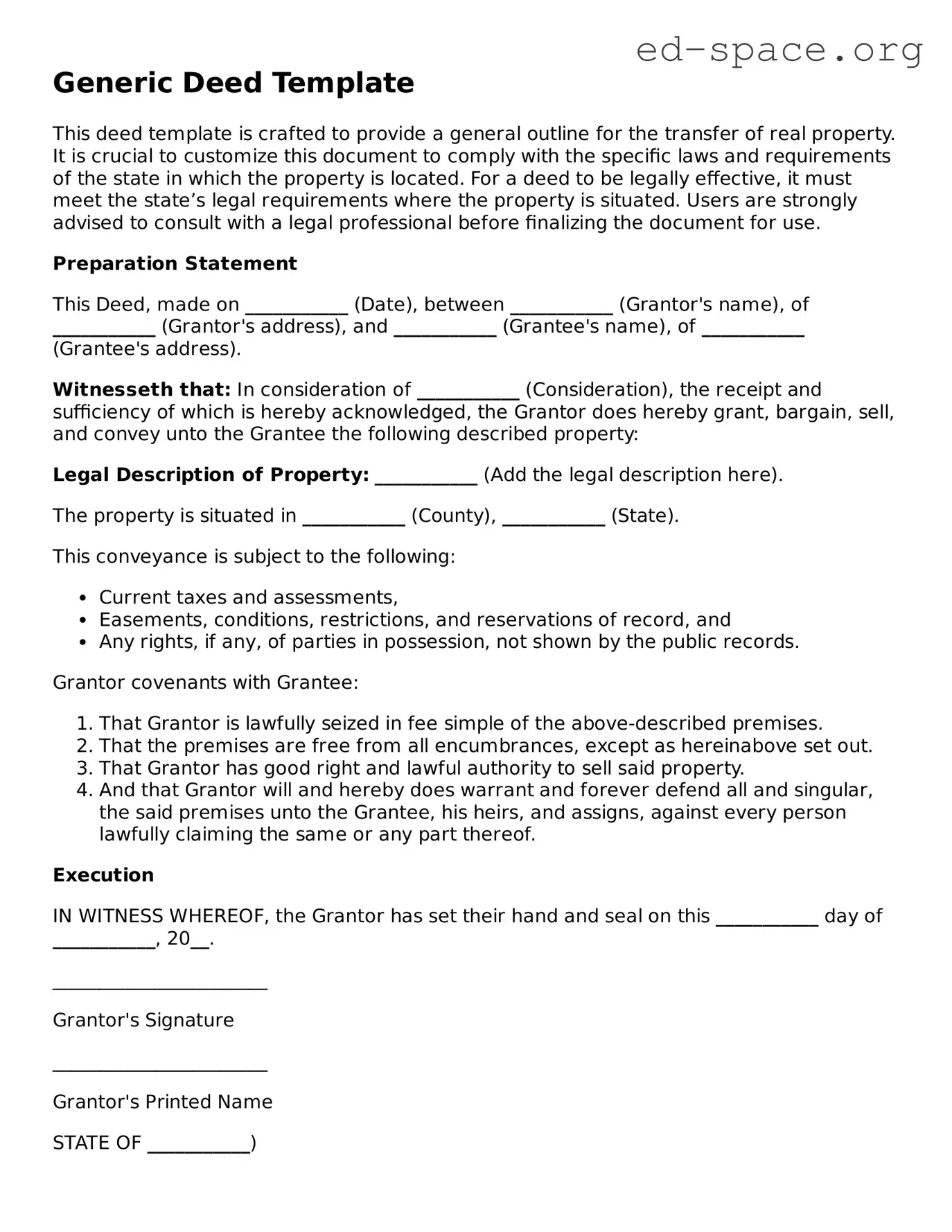FAQs about the Deed Form
What is a deed in the context of property ownership?
A deed is a legal document that represents the ownership of property. It is the instrument through which title of real estate is transferred from one party to another. The deed contains vital information, including the names of the old and new owners, a legal description of the property, and the signatures of the parties involved, thus formally effecting the transfer of ownership.
Are there different types of deeds?
Yes, there are several types of deeds, each tailored to specific needs and situations. The most common are the warranty deed, which guarantees that the seller holds clear title to the property, and the quitclaim deed, which transfers ownership without any guarantees about the title's clarity. Other types include special warranty deeds, grant deeds, and deeds of trust, each offering different levels of protection and assurances.
What is the importance of a legal description in a deed?
The legal description provides a precise, official delineation of the property's boundaries. Unlike a street address, which might change, a legal description uniquely identifies the property being transferred, ensuring there is no ambiguity about what is being sold or transferred. This can include information on measurements, boundaries, and any relevant geographic features.
Does a deed have to be recorded to be valid?
For a deed to effectively protect the grantee's ownership rights against claims by others, it typically needs to be recorded with a local or county government office. While the failure to record a deed does not invalidate it between the parties involved, recording offers a public record of the transaction and establishes a priority of claims in cases of dispute.
Can a deed be revoked or changed once it is signed and recorded?
Once a deed has been signed, delivered, and recorded, it generally cannot be revoked or altered unilaterally. Changes to the terms or the reversal of the property transfer require a new deed, agreed upon and executed by all parties involved. Situations necessitating such changes often arise from mutual mistakes or other agreed-upon reasons.
Is a lawyer required to transfer property via a deed?
While the law does not strictly require a lawyer for the transfer of property via a deed, consulting with one is highly advisable. Real estate transactions can be complex, and a lawyer can ensure that the deed complies with local laws, the language used correctly reflects the parties' intentions, and the overall process follows legal protocols, helping to avoid future disputes or problems.
What happens if there are errors in the deed?
Errors in a deed, such as misspellings, incorrect names, or erroneous legal descriptions, can lead to disputes and uncertainties about property ownership. Correcting such errors typically requires the execution of a new document, known as a corrective deed, that explicitly addresses and rectifies the mistakes made in the original deed.
How are deeds transferred if the property owner dies?
If the property owner dies, the transfer of the property will depend on how the deed was structured and whether the deceased had a will or estate plan. Properties held in joint tenancy or community property with right of survivorship automatically transfer to the surviving owner. In cases where the deceased was the sole owner, the property becomes part of the estate, and its transfer will be subject to the estate's probate process, guided by the will (if one exists) or state law.
